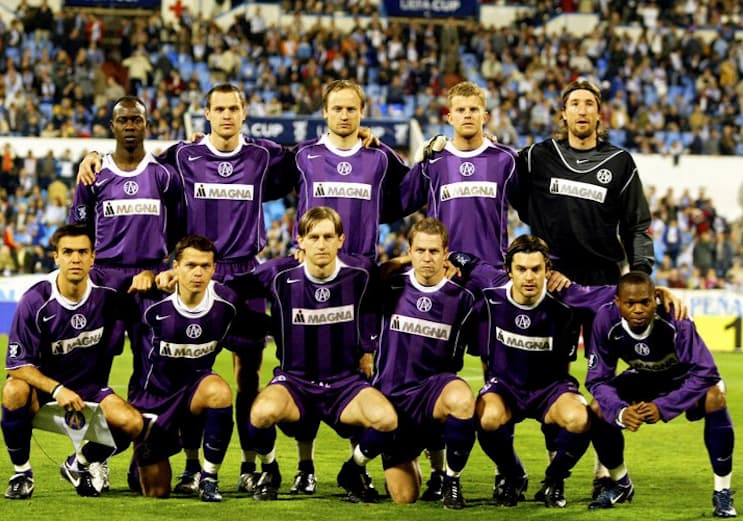Why Did the Premier League Go From 22 Teams to 20?

Having been founded in 1992, the Premier League started by having 22 teams in the competition, who each played 42 games a season. Shortly after its origin, the Premier League decided to reduce the amount of teams in the league to 20, but do you know why?
In this Elastico article, we’re going to discuss the reasons why this major change took place, as well as how this change was received. Read on to learn more.
Table of Contents
Why Did the Premier League Go From 22 Teams to 20?
The Premier League reduced the number of teams in the competition from 22 to 20 to combat fixture congestion and player fatigue, to improve the quality of matches and to increase its competitiveness both domestically and internationally.
Reasons for the Reduction in Premier League Teams
There are a number of reasons why the Premier League reduced the number of teams in the league from 22 to 20 including:
- Fixture congestion and player fatigue
- Improved quality of matches
- Financial benefits for clubs
- International competitiveness
Fixture Congestion and Player Fatigue
The main reason why the Premier League reduced the number of teams in the league is to combat fixture congestion and player fatigue. With the continued expansion of the Champions League, the top teams in the Premier League continue to face intense fixture congestion each season.
With some teams finding themselves playing 3 fixtures a week, player fatigue becomes a concern as it can lead to injuries. If this is the case, managers will complain about the fixture build-up.
By reducing the total number of Premier League matches to 38 a season, clubs will have to play four less fixtures. This has improved fixture congestion and protects players from injuries and fatigue.
Improved Quality of Matches
Another benefit of reducing the total number of Premier League teams is an improved quality of matches. This links directly with player fatigue and fixture congestion, because if footballers aren’t fatigued, they’re much more likely to perform at a higher level during matches.
This, in turn, will improve the quality of matches, and with fewer injuries taking place, means that the best players will be available for more matches across a season. Having the best players available should mean that the overall quality of matches improves.
Financial Benefits for Clubs
There are four key financial benefits for clubs following the decision to reduce Premier League sides from 22 to 20:
- Increased revenue from broadcast deals
- Reduced match day costs
- Improved competition
- Increased global appeal
Increased Revenue From Broadcast Deals
The reduction of teams from 22 to 20 in the Premier League allowed for negotiation of higher broadcasting fees, with the league becoming more streamlined and competitive. It’s common knowledge that broadcast revenue is one of the most significant sources of income for clubs within the league.
Reduced Match Day Costs
Having fewer teams in the league allowed clubs to cut down on some travel expenses, which includes making savings on accommodations, transportation, and other costs related to away matches.
Improved Competition
Having fewer teams in the league has resulted in a more competitive, 20-club competition. This, over time, has attracted more fans to matches, increasing ticket sales, merchandise sales and sponsorship deals.
Increased Global Appeal
Another financial benefit from the reduction of Premier League teams derives from increased global appeal. Having fewer teams has meant that the English top flight can showcase its talent more effectively, attracting a much bigger international audience, which, in turn, brings in more money through international broadcasting deals and merchandise sales.
How Did They Reduce the Number of Premier League Teams?
In order to accommodate the reduction of teams in the Premier League, four teams were relegated following the 1994/95 season and only two were promoted from the Football League First Division.
The following four teams were relegated from the Premier League:
- Crystal Palace
- Norwich City
- Leicester City
- Ipswich Town
The following two teams were promoted to the Premier League:
- Middlesbrough
- Bolton Wanderers
Reaction to the Change
Once the reduction of clubs had been rolled out, there were several different reactions to the change from interested stakeholders including clubs, supporters and pundits. The two main reactions to the change were – increased relegation threat and the impact on English football.
Increased Relegation Threat
The reduction of Premier League teams was of particular concern for the weaker teams in the league. This was because of the decreased number of league spots available each season, which therefore increased the threat of relegation.
In the long run, it has meant that there are fewer opportunities for “smaller” clubs to play at the highest level in the country.
Impact on English Football
There was also a concern on the wider impact on English football. Critics highlighted that the reduction in teams could result in a decrease in the quality of football across the country, with fewer players having the chance to play at the top level.
Conclusion
The decision to reduce the number of Premier League teams from 22 to 20 in 1995 was a significant change in English football that received mixed reviews. Although the change meant that the English top flight became more competitive and internationally followed, relegation-threatened teams and the impact on English football were effected.
After many years of it being played in a more streamlined, 20-club format, the Premier League has arguably become the most competitive league in the world, attracting the biggest talents from across the globe.
Frequently Asked Questions
When Did the Premier League Become 20?
After having its first official season as the ‘Premier League’ in the 1992/93 season, the Premier League reduced the number of clubs in the league to 20 for the 1995/96 season.






